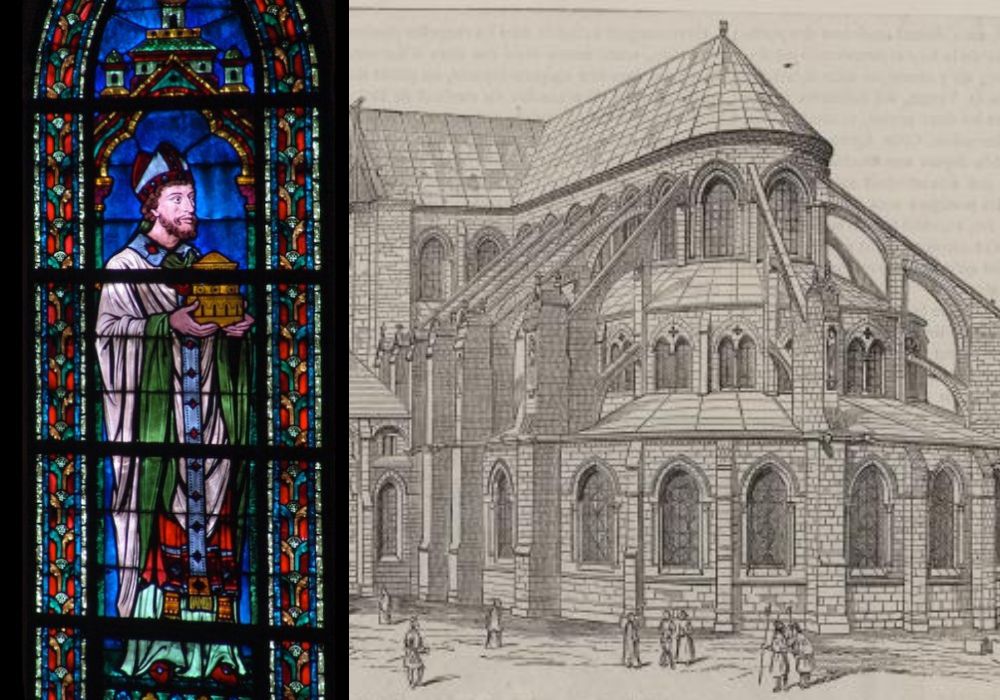At the heart of Paris, Notre-Dame de Paris has stood for centuries as a marvel of Gothic architecture and a symbol of resilience. Its towering spires, intricate sculptures, and breathtaking stained glass have captured the imaginations of millions. But few know the story of Maurice de Sully, the visionary bishop whose bold dream transformed the city’s skyline and laid the foundation for one of humanity’s most enduring masterpieces.
From Modesty to Magnificence
Maurice de Sully’s journey begins far from the grandeur of medieval Paris. Born around 1120 in the small village of Sully-sur-Loire, he grew up amidst modest surroundings. Yet, his brilliance shone early, earning him a place in Paris’s thriving intellectual community. As a theologian and preacher, his eloquence elevated him to the role of Bishop of Paris in 1160—a pivotal moment for a man who would soon reshape the spiritual heart of the city.

A Grand Idea for a Growing City
By the 12th century, Paris was expanding, its population swelling alongside its ambitions. The ancient Church of Saint-Étienne on the Île de la Cité, with its Romanesque style, no longer reflected the city’s growing importance. Maurice envisioned a new cathedral—one that would match Paris’s aspirations, honoring the Virgin Mary while standing as a testament to faith and human ingenuity.
The design embraced the cutting-edge Gothic style, which defied conventional limits of height and light. This architectural revolution would allow for soaring ceilings, delicate arches, and vivid stained-glass windows that bathed the interior in a kaleidoscope of color.
The Builders of Dreams
In 1163, construction began on Notre-Dame, with the first stone likely laid by Pope Alexander III himself. Maurice de Sully led the charge, overseeing the construction of the choir and the early stages of the nave. Craftsmen from across Europe labored to bring his vision to life, carving intricate statues, lifting stone upon stone, and crafting arches that seemed to touch the heavens.
The work was arduous, yet it carried a spiritual weight. Each feature of the cathedral, from its towering buttresses to its smallest carvings, was designed to tell a story—a visual sermon for a largely illiterate population.
A Legacy Beyond Stone
Maurice de Sully’s impact extended far beyond his architectural ambitions. As a leader of the Church, he penned sermons in both Latin and the local vernacular, ensuring that his teachings reached every member of his congregation. His reforms to the liturgy, including his writings on the Canon of the Mass, solidified his role as a spiritual guide.
Though he did not live to see the cathedral’s completion—Maurice passed away in 1196—his successors carried forward his vision. Over the following decades, Notre-Dame gained its iconic towers, soaring spire, and elaborate flying buttresses, becoming the masterpiece we know today.
Notre-Dame Reborn
Fast forward to April 15, 2019, when fire ravaged Notre-Dame, reducing its iconic spire to ashes and leaving the world mourning the loss of a cultural treasure. Yet, in the face of tragedy, the spirit of resilience prevailed. As the cathedral undergoes its restoration, Maurice de Sully’s legacy looms larger than ever. His dream—a union of faith, art, and community—continues to inspire those who labor to restore its glory.
When Notre-Dame reopens its doors, visitors will once again stand in awe beneath its lofty arches and luminous rose windows. But amidst the grandeur, they may pause to remember the man who dared to imagine it all—a humble son of Sully-sur-Loire who dreamed a dream as enduring as stone itself.

